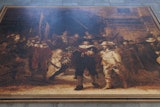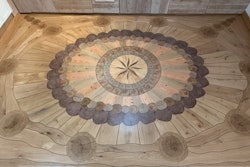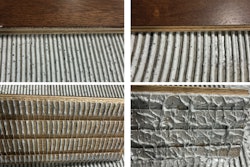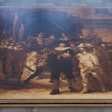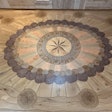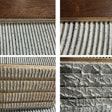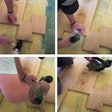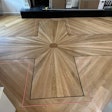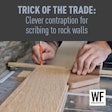Q. Will covering my wood floors cause damage?
A. Covering wood floors to protect them from damage by movers, subcontractors or other tradesmen is common practice. During resanding or new construction, wood floors are covered with anything and everything the general contractor, subcontractor or homeowner can get their hands on – whether they should be or not.
Watch Out
Many of us have gotten a call from the general contractor to put the final coat on the job before closing. Much to our surprise, when we get to the job, the entire floor is covered with plastic. And on top of the plastic is everything one could imagine. Once the trash, debris and plastic are removed, there's more underneath. After sweeping,cleaning and vacuuming the floor clean, you realize the floor has cupped.
Another one to watch out for is the floor covered prematurely with red rosin paper after you've put down a couple of coats. As you begin to remove tape and paper,much to your surprise, it too is stuck to the floor.
Placing paper on the floor for runners also causes damage. Natural sunlight can fade or darken different species and finishes. Once you remove the paper,there will be a visible line left on the floor. In most cases it cannot be removed even if resanded. With floors that have been stained — whether dark stains, light stains, white or pastel colors — covering the floor will play a major role in how the finished job looks.
Let it Cure
After the floors have been sanded and are ready for finish or stain, drying and curing time must be considered. The many finishes used all have different characteristics and drying times.
During the finishing process of a job, other trades need to get to the job site to do final punch list work. After the floor is coated, the foreman comes in late that night or early the next morning and puts felt paper or corrugated cardboard on your wet or tacky finish.
Remember that the outside and job-site conditions play a big part in how the finishes dry and cure. Moisture content, relative humidity and airflow are critical in the finishing stages. Even though a water-based finish that dries quicker than another finish may be used, paper or other coverings can stick and cause damage.
Covering any type of finish that has not cured can cause damage. Along with adhesives, finishes also create off-gassing. Covering limits or stops the curing process. Always consult with the finish manufacturer's recommendations before you proceed.
Prefinished Products
Many times after you've completed a prefinished glue-down job, the home owner or builder wants to cover the new investment. While they think that this will protect the floor from being damaged, it may actually cause delayed drying or curing of the adhesive. Once the floor is covered, this limits air movement and slows the off-gassing of the adhesive.
The timing of installation on prefinished products is also critical. The general contractor or home owner should be educated as to when these products should be installed. The best time is close to the end of the job, when there is less traffic from other trades.
Before any prefinished floor is covered, it must be thoroughly cleaned and vacuumed. To prevent damage when covering a wood floor, craft paper cardboard cartons that a prefinished product comes in work well. For a job-site finish that has dried or cured per manufacturer's recommendations, craft paper or clean drop-cloths work well. Do not use products such as plastic, felt paper or red rosin paper, which may bleed or transfer color if they get moist or wet. Products that don't breathe will also cause major damage to a wood floor.
So when you have to cover a floor, refer to manufacturers' recommendations. All coverings are temporary and should not remain on the floor more than eight to 12 hours.
When taping, always tape paper to paper — not paper to the floor. Don't use packing, duct, shipping or string tape. Use a good-quality masking tape.
Remember to keep the customer educated. Be sure that general contractors and other tradesmen are also made aware of how covering wood floors during resanding or new construction will affect them. An ounce of prevention is worth a pound of cure.










